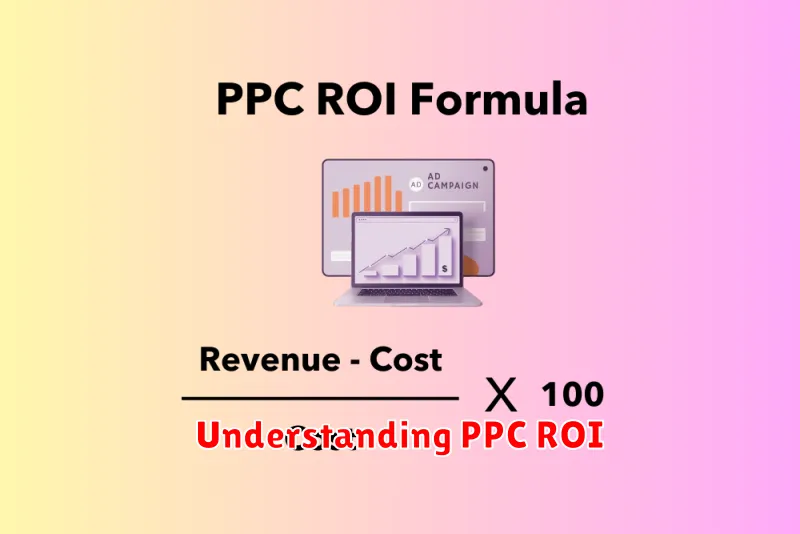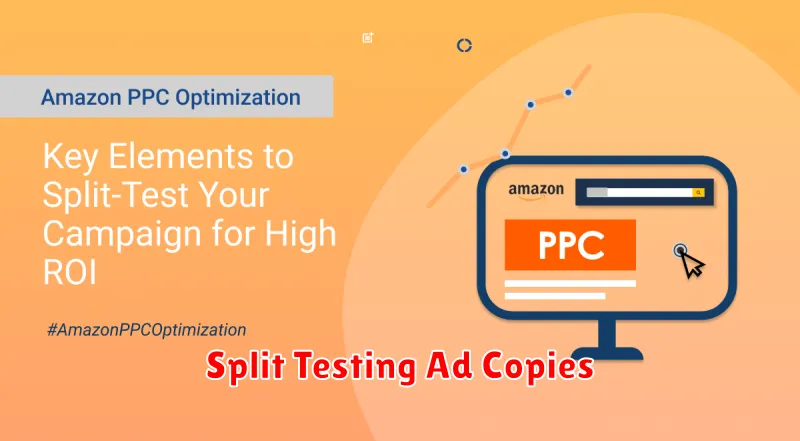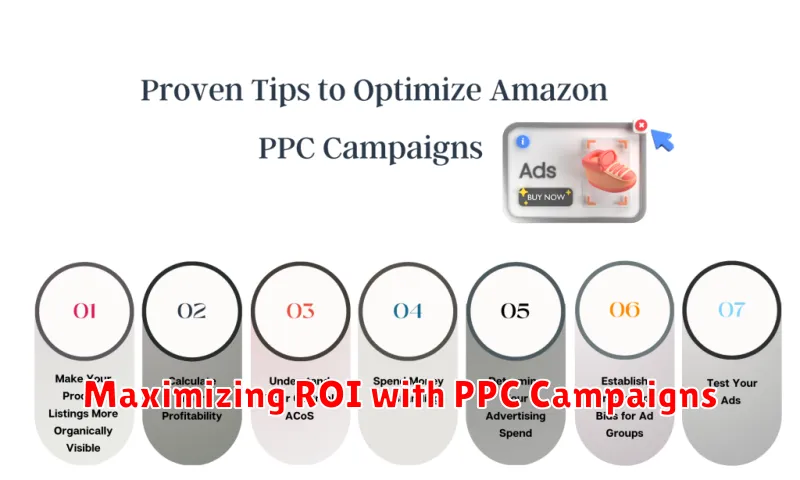In today’s competitive digital landscape, Pay-Per-Click (PPC) advertising stands as a cornerstone of successful marketing strategies. Maximizing ROI from these campaigns, however, requires a strategic approach. This article delves into the essential elements of effective PPC campaign management, offering practical insights to help you achieve optimal returns on your advertising investment. From meticulous keyword research and targeted ad copy to insightful bid management and comprehensive performance tracking, we will explore the key strategies to unlock the full potential of your PPC campaigns.
Whether you’re a seasoned marketer seeking to refine your approach or a newcomer navigating the complexities of PPC, understanding the nuances of campaign optimization is crucial. This article will provide you with the knowledge and tools to maximize your ROI, improve conversion rates, and drive substantial business growth through highly effective PPC campaigns. We will explore the essential components of successful campaigns, from initial setup and ongoing optimization to advanced techniques for maximizing your return on ad spend.
Understanding PPC ROI

Return on Investment (ROI) is a key metric in evaluating the effectiveness of your PPC campaigns. It essentially measures the profit generated for every dollar spent on advertising.
Calculating your PPC ROI involves a simple formula: (Revenue – Cost) / Cost. For example, if you spend $1,000 on a campaign and generate $2,000 in revenue, your ROI is (2000 – 1000) / 1000 = 1 or 100%.
A positive ROI signifies profitability, meaning your campaigns are generating more revenue than they cost. A negative ROI, however, indicates that your spending is exceeding your returns and requires adjustments to your strategy.
Understanding your ROI is crucial for optimizing campaign performance. By analyzing this metric, you can identify areas for improvement, such as adjusting bids, refining targeting, or improving ad copy to maximize your returns.
Targeting High-Intent Keywords
A crucial aspect of maximizing ROI with PPC campaigns is targeting the right keywords. Focusing on high-intent keywords allows you to reach users actively searching for products or services like yours, significantly increasing the likelihood of conversions.
High-intent keywords often reveal a user’s stage in the buying cycle. For instance, keywords like “best price [product]” or “[product] reviews” indicate a strong purchase intent, while broader terms like “[product category]” suggest a user is still in the research phase. By targeting keywords that align with later stages of the buying cycle, you can efficiently allocate your budget towards users more likely to convert.
Identifying these high-intent keywords involves thorough keyword research, analyzing search patterns, and understanding your target audience’s behavior. Tools like keyword planners can help you discover relevant keywords with high search volume and strong commercial intent.
Improving Quality Score

A high Quality Score is crucial for PPC campaign success. It directly impacts your ad’s position and cost-per-click (CPC). By improving your Quality Score, you can achieve higher ad rankings at lower costs, ultimately maximizing your return on investment.
Key factors influencing Quality Score include:
- Expected CTR (Click-Through Rate): How likely your ad is to be clicked.
- Ad Relevance: How closely your ad copy matches the user’s search query.
- Landing Page Experience: The relevance and usability of the page users land on after clicking your ad.
To improve your Quality Score, focus on creating highly relevant ads that directly address the user’s search intent. Ensure your landing pages provide a seamless user experience, offering valuable information related to the ad copy and keywords.
Regularly monitor your Quality Score and identify areas for improvement. By consistently optimizing your campaigns, you can achieve a higher Quality Score and significantly boost your ROI.
Using Ad Extensions
Ad extensions are crucial for maximizing your PPC campaign’s ROI. They provide additional information and interactive elements to your ads, boosting visibility and click-through rates. This leads to a higher quality score, which can lower your cost-per-click and improve your ad position.
Several types of extensions cater to different campaign goals. Location extensions display your business address and phone number, ideal for driving in-store traffic. Call extensions encourage direct calls from potential customers. Sitelink extensions provide links to specific pages on your website, guiding users to relevant content.
Callout extensions highlight key selling points like “Free Shipping” or “24/7 Support.” Structured snippet extensions showcase specific aspects of your products or services in a structured format. Choosing the right combination of extensions for your target audience and campaign objectives is essential for optimal performance.
Split Testing Ad Copies

Split testing, also known as A/B testing, is crucial for optimizing your ad copies and maximizing your PPC campaign’s ROI. It involves creating multiple versions of your ad copy, each with slight variations in elements like headlines, descriptions, or calls to action.
By running these variations simultaneously, you can measure which version performs best based on key metrics such as click-through rates (CTR) and conversion rates. This data-driven approach helps identify the most effective messaging and resonates best with your target audience.
For example, you might test two different headlines, one focusing on price and the other on product benefits. Analyzing the results will reveal which headline generates more clicks and conversions, informing your future ad copy decisions.
Optimizing Landing Pages
A crucial aspect of maximizing PPC campaign ROI lies in optimizing landing pages. A well-optimized landing page drastically improves conversion rates, leading to a higher return on ad spend. Relevance is key. Ensure your landing page content directly corresponds to the ad copy and keywords used in your campaign. A user clicking an ad for “blue widgets” should land on a page specifically showcasing blue widgets, not general widget information.
Clarity is paramount. Users should immediately understand what your page offers and what action you want them to take. A clear call to action (CTA) is essential. Use strong verbs and make the CTA visually prominent. Furthermore, a clean, uncluttered design facilitates quick comprehension and reduces bounce rates.
Page load speed is another critical factor. A slow-loading page can lead to user frustration and abandonment. Optimize images, minimize HTTP requests, and leverage browser caching to ensure a speedy experience.
Mobile optimization is no longer optional. A significant portion of internet traffic originates from mobile devices. Your landing pages must be responsive, adapting seamlessly to various screen sizes and providing a smooth mobile user experience.

